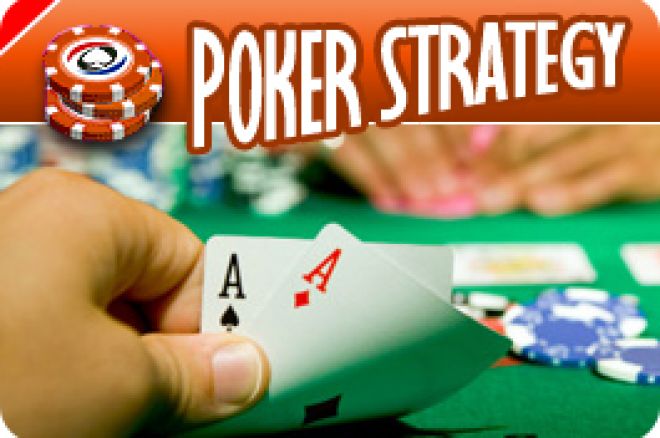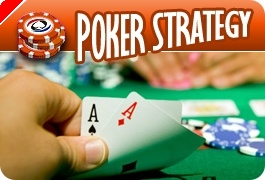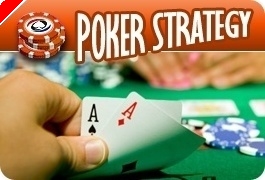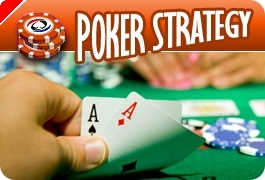H.O.R.S.E. Poker Strategy: In the Mix -- Playing Three-card Wheels in Razz

Razz tends to be most mixed-games players' weakest game. If I were to theorize why that is the case, I'd probably point to this combination: (1) the game is not spread in live casinos in any format but mixed formats except for a few oddball tournaments; (2) razz, like all lowball games, has a mind-numbing capacity to turn an excellent starting hand into absolute trash by the river. If no-limit hold'em is an exercise in patience, razz is an object lesson in frustration.
In a way, being dealt three wheel cards is akin to being dealt pocket aces in hold'em. There are some differences �� namely the fact that the exposed cards shown by opponents in razz will impact the strength of a player's three-card wheel �� but three-card wheels are the strongest starting hands in razz. They are also often the most misplayed hands in razz, for the simple reason that players often pay no heed to how their own board and their opponents' boards develop. They get stuck in the mindset of "I have three wheel cards" and decide right away that the hand must be played all the way to the river.
Third street is where the mistake begins, although for the most part players play third street correctly. They complete the bring-in if it has not yet been completed or raise if someone else has already completed. Putting in more than one raise on third street is generally only recommended if there is more than one opponent in the hand, for three reasons.
First, very few razz players put in more than one raise with anything but a three-card wheel. Doing so will almost expose your cards for the rest of the table to see. Second, the starting hand at third street is only three-fifths of a made hand. In other words, it's not even really a draw to a made hand (which would be four solid cards). So much can happen between third street and fifth street �� never mind the river �� that most players do not want to commit too much to the pot before catching at least one other good card. Finally, by putting in more than one raise on third street, a player makes his opponent's decisions on fourth and fifth street automatic. That can be helpful to the player (his own decision is also automatic) but makes it mathematically +EV for his opponent to chase in most situations due to the size of the pot. Sometimes sacrificing a small bet is worth the edge in expected value it garners.
Fourth street is where things often go horribly wrong for three-card wheels. A big, fat, ugly face card or visible pair will peel off the deck and onto the player's board against a baby card for one or more of his opponents. Here the correct action is based upon how much money went in the pot and a read on the opponents. If the pot was not completed preflop and the opponent is liable to have a four-card nine or better, it's almost always a fold. If the pot has been raised preflop, calling is automatic against one opponent. Against more than one who have both caught good, folding is the play due to the fact that the player will have to overtake both opponents in order to win the hand.
Obviously, if a non-pairing baby card comes on fourth street, the player is tied to the hand to the river in almost every case. That's where "razz frustration" sets in �� as the player's board goes pair, paint, pair to finish with queen-high. But that's just the nature of razz. It's not a mistake by the player to play the hand all the way at that point.
Another brick on fifth street should be enough to finish off most three-card wheels, but you'd be surprised by the number of people that stubbornly cling to them. This is nothing but desperation and horrible play. A non-pairing baby card acts similarly to the way it did on fourth street; at that point the player is stuck going to the river (and assuming that calling fourth street was automatic, will have played the hand correctly). It's those in-between cards that are so problematic on fifth street �� the eights, nines and tens of the world.
Eights, nines and tens often tempt a player who started with a three-card wheel to continue in the hand past fifth street. The reality, however, is that absent running perfect cards, the best hand that player will finish with is either a made eight, a made nine or a made ten. That's where a player's board-reading, hand-reading and player-reading skills come into play. The questions to ask are, "How has my opponent's board developed? Do I think my opponent is paired? Based on the action, what's a reasonable range for my opponent to have? Based on that range, is it worth trying to draw at a middling-strength hand?" Sometimes the answer is obvious; an opponent has shown nothing but strength and is showing an incredibly low board. Other times there are no easy answers to those questions.
The easiest way to avoid those sticky situations is to fold the fourth-street bricks and release all but the best of the fifth-street improvements where calling on fourth street was automatic. In order to do that, however, a player must exercise discipline and not fall deeply in love with those three baby cards on third street.








